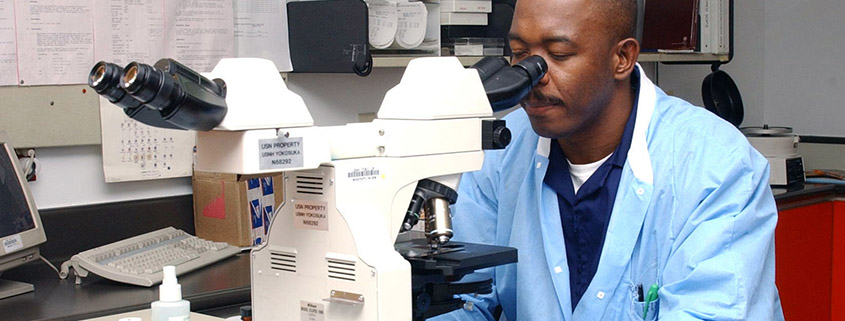Cytology vs. biopsy: Comparisons of accuracy
Andrew S. Loar, DVM, DACVIM (Oncology and Internal Medicine)
Posted on 2017-09-05 in Clinical pathology
The evaluation of clinically abnormal tissues submitted for cytological analysis has for decades remained a simple and low cost diagnostic technique. In contrast to the acquisition of biopsy samples, material obtained for cytology examination generally requires less morbidity, time and planning. Only a small number of studies have demonstrated the relative value of cytologic, compared to histologic (biopsy), diagnoses in the same patient. The discussion below as the first part of a multipart article reviews research performed by clinical and anatomic pathologists to assist clinicians who must determine the accuracy of results derived from cytologic specimens.
Diagnostic accuracy is the frequency a test correctly identifies a patient as having, or not having, the disease of interest; a test with high diagnostic accuracy reveals relatively few false positive (highly specific) and few false negative (highly sensitive) results. Since an index test is often performed to identify more than one disease process, it is useful to define the assay’s diagnostic accuracy by determining how often the index test agrees, or correlates, with the reference standard. Thus, many studies discuss the frequency of concordancy (correlation) or discordancy. Other studies indicate the proportion of partial or complete agreement, which reflects the proportion of cases where the cytologic diagnosis matches that of the biopsy.
There are several inaccuracies inherent in the performance and evaluation of cytology and histopathology assays. The quality of both tests, and that of these comparative studies, are obviously dependent on the experience of the clinical and anatomic pathologists reading the slides. There can be significant variations in diagnoses between different pathologists evaluating the same tissues. Indeed, similar, if not less dramatic, differences have been identified when the same individual examines the same slides at different times. Several histopathology studies have reviewed interobserver variation, chiefly representing differences between first and second opinions, in the diagnosis of an amalgam of biopsy submissions. Significant diagnostic disagreements occurred in 10-20% of the cases, with clinically relevant partial (dis)agreement noted in nearly 50%. Also, variation in the type of specimen obtained for biopsy has been associated with discordant results; needle or core histology samples generally have revealed less accuracy than material obtained via excisional or wedge resection. These and other discrepancies call into question the term ‘gold standard’ with reference to histopathologic analysis and the difficulty in confirmation of true positive and true negative findings.
Nonetheless, methodologies of cytologic testing may not be consistent. Every cytology specimen must be interpreted with the presumption that material submitted may not be representative of the aspirated lesion. This is self-evident when the sample is acellular or consists of only peripheral blood elements; however, in more cellular specimens a clinical pathologist may identify distinct cytologic findings, which are negative for specific disease, yet fails to suggest that the results may be inconclusive. This is highly relevant when comparing the value of cytology to biopsy because, in most investigations, the exclusion of inconclusive cytologic diagnoses markedly improves the determination of diagnostic accuracy. A cytology finding that does not confirm tumor, or any other definitive diagnosis, should not necessarily be considered a negative result if it is performed on, or identified as, a non-representative specimen.
Other limitations in cytologic evaluation include the distribution and accessibility of the lesion in question. Aspirates of focal, particularly external, masses generally yield more representative findings compared to material obtained from more diffuse lesions or those sought via intracavitary needle assaults. Similarly, ultrasound-guided aspirates are proven to be more accurate than when the needle is aimed with less direction. Finally, the size of the needle used, the aspiration technique and the number of slides prepared are all associated with variation in diagnostic accuracy and the reader is encouraged to review standard cytology texts to develop suitable methods of sample procurement.
Check back next week for a post that discusses the relative accuracy of cytology versus biopsy for submissions from lesions at cutaneous, gastrointestinal, respiratory and bony sites.
Image credit: Modified from U.S. Navy photo by Tom Watanabe. [Public domain], via Wikimedia Commons
About the author
|




